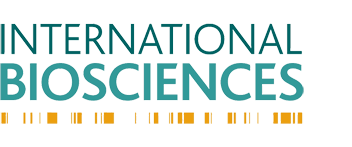A Paternity DNA Test: Curbing Human Trafficking

A paternity DNA test is a type of DNA analysis carried using samples from a man in order to determine whether he is the biological father of a child or children. There are several reasons why one would consider the idea of DNA parental testing as genetic proof of an existing relationship but namely in cases of inheritance, court cases, adoption, immigration, sibling matches, social benefits and even others such as human trafficking.
Paternity DNA Test- is it a Necessity?
Cases of child trafficking are being identified and conclusively resolved thanks to DNA paternity testing.
Child trafficking is a form of human trafficking which focuses on children as the object of exploitation. The United Nations official definition of human trafficking is: “The recruitment, transportation, transfer, harboring or receipt of persons, by means of the threat or use of force or other forms of coercion…”
According to statistics in the US, some 12 million children are trafficked at any given point. A staggering number in which numbers show that on average only 3 of 1000 children are identified. Therefore if DNA testing can help to identify even just 1% of this population then it is progress.
A recent case that caught the attention of the media this year is the case of ‘Maria’, the 4-year-old blonde girl found with Roma parents in Greece. In order to determine whether the couple, Sasha and Atanas Ruseva, that claimed to be Maria’s parents, where her ‘true’ birth parents, a DNA test was performed to find DNA matches between the couple and ‘Maria’. It was concluded, based on the results that the couple that claimed to be her parents were not in fact her biological parents.
Several calls had been made to identify Maria’s biological parents and with the help of DNA testing this was possible. Maria’s biological mother and biological father were identified and DNA test results confirmed the alleged parental match.
Deputy Interior Minister Leonidas Grigorakos told the BBC that he had prepared an amendment to be submitted to parliament that makes a paternity test mandatory for children born outside hospitals.
“Undoubtedly the system and the child registration law were problematic. We are now changing that,” says Mr. Grigorakos. He added that he had ordered an administrative inquiry that would investigate whether public servants were guilt of any wrongdoing in Maria’s case.
Whether adoption schemes are legal or illegal, formal or informal, a child’s biological parents may be determined through a paternity DNA test. If there is suspicion that a man is the father of a child it may be possible to identify the match by conducting a simple paternity test. Results not only tend to be accurate but the tests themselves also relatively low cost and easy to perform.
Furthermore, certain DNA test results are eligible for use as evidence in the court of law in legal cases. In recent years, there have been several cases that have used parental profiling to contribute to legal evidence presented. A legal scenario DNA paternity test may be a complicated process, however in some cases it may prove necessary as proof of relationship.
There has also been talk of using DNA paternity testing for births taking place out of hospital, to confirm the parents of each child born. When birth certificates are not present or not sufficient to prove a parental match, DNA parentage testing may be the way forward, for example as highlighted above in cases of adoption or perhaps child trafficking.
With DNA parental testing, the probability of exact results is high, concluding a near 99.99% accuracy rate. Moreover, the ease of taking the actual tests makes it an effective tool of achieving the results and answers one may need, whatever the case may be.
Perhaps in future if an international DNA database were created then we could help stop the trafficking before it escalates. Already in place are few smaller scale DNA databases that aim to curb the traffic, and through this they have identified and saved children from illegal adoptions and the like. By having a profile for each child we can safely match the genetic profile of a missing or abused child. In using a paternity DNA test to identify the children in question, we could be looking at a way forward in fighting the battle against human trafficking.


